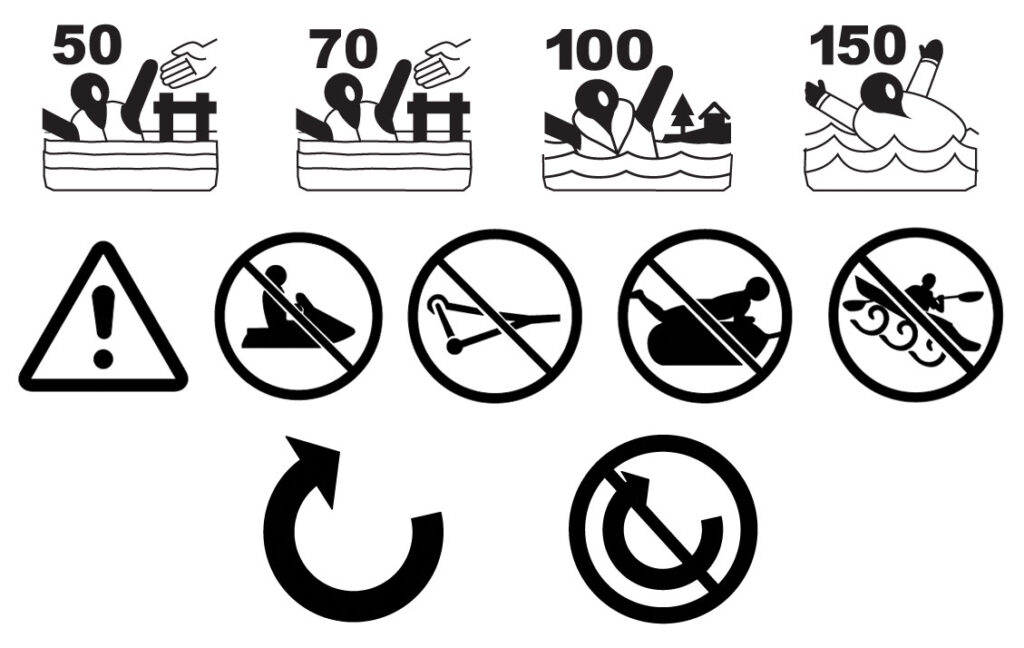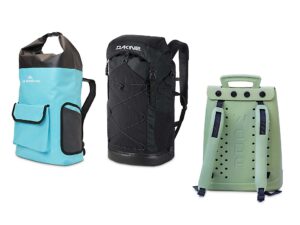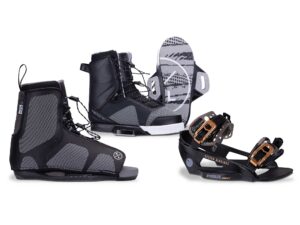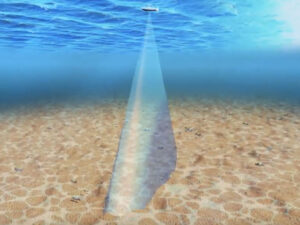
Buying a life jacket? You may run across two different types of labels. The big difference? Traditional labels identified the life jacket’s type: I, II, III or V. The newer labels provide a bold number, which indicates its buoyancy in newtons (1 newton (N) equals 0.225 pounds). Newtons are used so that life-jacket buyers in Canada, Europe and the US rate life jackets the same way. Find out what other information these new labels tell boating consumers.
Graphics One
Graphic representations—aka icons—replace words on the new labels to make the labeling less reliant on language and thus more universally accessible. For instance, the new labels use a graphic of a victim in the water. The farther from shore the swimmer is shown and the more squiggly the lines, the rougher the water the life jacket is intended for. A hand indicates if help is nearby.
Graphics Two
The new arrows also feature a curved or circular arrow graphic. This informs the buyer or wearer of the life jacket’s ability to turn an unconscious or disabled swimmer face-up. The universally accepted circle with a line (the “no” symbol) overlaying the arrow indicates it lacks turning power. The “no” symbol comes into play more on the new life-jacket labels.
Graphics Three
So that consumers and wearers can determine what uses the life jacket is suitable for, icons indicate a towrope handle, a PWC, a towed tube, a whitewater canoe, etc. If there is a slashed circle over one or more of the icons, the life jacket is not suitable for participating in those activities.
Read Next: Picking the Right Type of Life Jacket
Other Changes
The third party that conducted the testing—for example, Underwriters Laboratories—is clearly noted. The US Coast Guard approval number will also be noted. On a separate label or a separate section of the label, buyers and wearers will also find care instructions for the life jacket.
Label Legality
This article aims to help boat owners buy a life jacket. Will you need to replace your existing life jackets with new ones bearing the new label? No. Life jackets with the old or new labels both qualify with carriage compliance in the US and Canada. Of course, life jackets still must be in good condition and of the correct size and quantity for the crew aboard your boat.
Accessibility
We wrote this article to help boat owners buy life jackets. But many wearers are guests, charter parties or tour-boat passengers with little knowledge of boats and boating safety. Here and abroad, many might not read English. The new labels harmonize US labeling with those of Canada and Europe, using icons to make user information more universally accessible.
Children’s Life Jackets
Learn how to properly size a life jacket for a child by visiting boatingmag.com/story/gear/choosing-life-jackets-for-kids.
Buoyancy Needed
According to the US Coast Guard, most adults need 7 to 12 pounds—31 to 53 newtons—of buoyancy to stay afloat. This varies by percentage of body fat and body shape. For perspective, the Mustang MIT 70 inflatable—the life jacket worn by Boating editors while on the water—offers 15.7 pounds of buoyancy (70 N).









